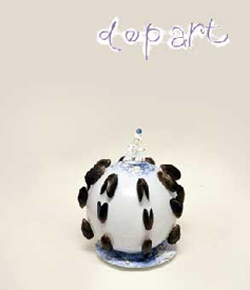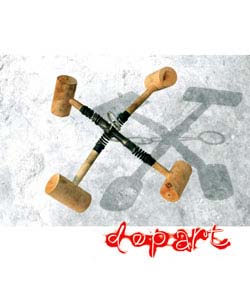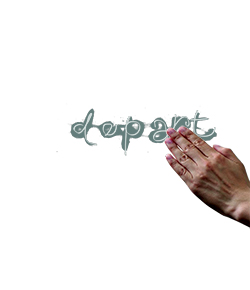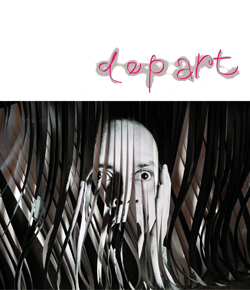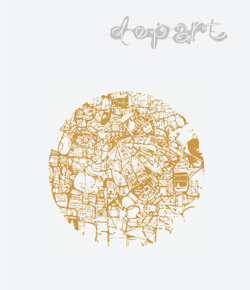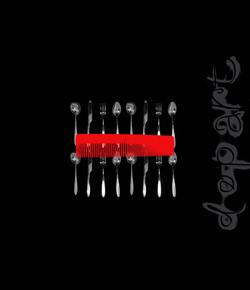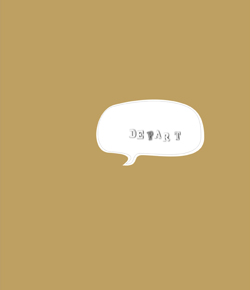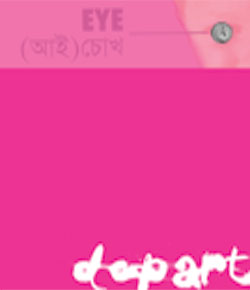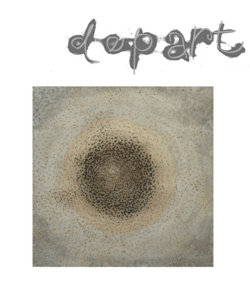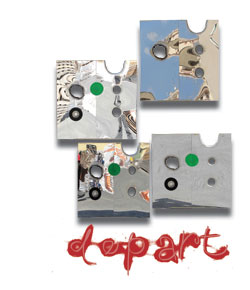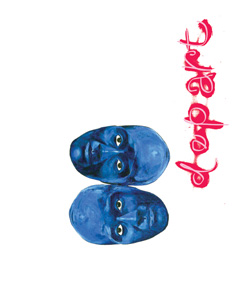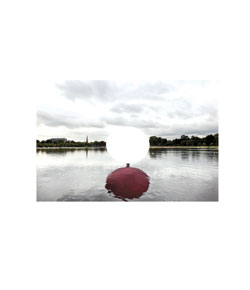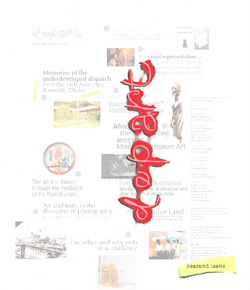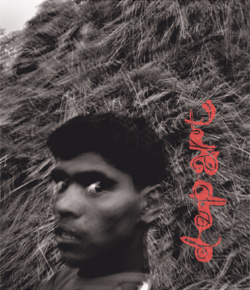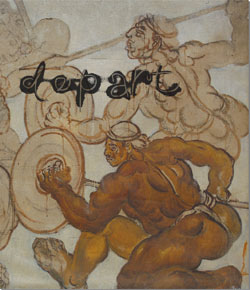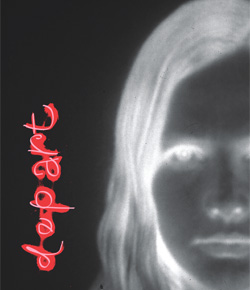Features
Yokohama Triennale 2014
The Ultimate Book or the Inferno of History

Whatever the intention behind the whimsical behaviour of nature or that of a despotic regime, burning does not always ensure the ultimate demolition of an undesired written or printed work. The power of 'thought' cannot simply be burned to extinction. The object that carries the text or the message and transmits the thought might be turned into ashes but that does not mean the end of the message. While the theme of the Yokohama Triennale 2014 revolves around the idea of 'oblivion', it does not refer merely to the subtle sailing through pristine waterways of the past or through the moments of our forgotten history. On the contrary, what it convincingly tries to convey is the fact that a sea of inferno needs to be crossed; and only then can true memory be retrieved from the ashes of history.
The exhibition, thematically subtitled Sailing into the sea of oblivion, has indeed been a historical journey not only from the point of its dealing with delicate historical moments but also for the creation of history itself in terms of innovative and thought-provoking approaches that answer the fundamental question of how to exhibit multiple artistic forms and mediums under a single umbrella. The main title of the exhibition Art, Fahrenheit 451 was borrowed from Ray Bradbury's 1950's creation Fahrenheit 451, the book written against the backdrop of political and intellectual assault on free speech, the dark era of the McCarthy witch-hunt in the US. The book is also famous for its brilliant celluloid counterpart grounded on the same plot and title and directed by the French New Wave maestro Francois Truffaut. The question that poses itself is what motivated artistic director of the exhibition, Yasumasa Morimura, famous for his innovative representation of Vincent van Gogh, to excavate that epoch? The answer lies in the desperate situation arising from the traumatic experiences that the people of Japan had to go through in 2011, when a massive earthquake was followed by a devastating tsunami and a nuclear disaster that shattered the psyche of post-war Japan. This had been worsened further by the never-ending economic recession multiplied by the effects of globalization and world capital circulation.
Art, as an intellectual praxis, naturally responded to this hullaballoo of economic and political real-life absurdity with its own inherent power of rewriting or re-telling history, only to construct or re-construct the dream or hope of a promising future. Bradbury's book here acts as a perfect provocateur to transmit the notion of the strength of 'idea' itself or perhaps we could rephrase it as 'thought' that remains embedded throughout time, ignoring political or historical oppression and quagmire.

The Triennale spanned a large section of the Yokohama Art Museum and a huge warehouse shed in Shinko Pier, situated at the seaside waterfront, attracting more than two hundred thousand visitors from the beginning of August to early November. Structured in the form of a book with two introductions and eleven chapters, its flamboyant aesthetics invited close reading. A 15-meter-long rusty iron truck with the title Flatbed Trailer and minute details of gothic designs all over its body welcomed art enthusiasts in front of the Yokohama Museum of Art, the main venue of the exhibition. The gothic style, creation of Belgian artist Wim Delvoye, counterbalances the larger-than-life and miniature existence of beings and objects in this world. Adjacent to the trailer lay Construction 629, composed of a stand containing eight balloons called 8 breaths along with the a bear-like construction made of polythene sheets standing next to a garbage bag. These heavy objects made of solid metal by their creator, Korean artist Gim Hongsok, presumably intended to provoke fresh argument regarding the conception of public art, while also referring to the transformation process of an ordinary object into a piece of art, focusing on the individual role of the artist, materiality or what lies behind the story.

Just inside the entrance of the gallery, the visitor faced an enormous clear plastic waste bin, which reached from the ground floor to the roof of the 2/3-storey building. However, this uncovered bin only accepted art-object wastes rather than the household or industrial ones. Michael Landy, the London-based artist and actual owner of the bin, was also the member of the YBA (Young British Artists) famous for their genuine artistic inventions in the 1990s. Landy himself made his strong presence known in the international art sphere via demolishing seven thousand, two hundred and twenty seven art objects of his own custody in front of fifty thousand onlookers during 2001. The function of this new version of the Art Bin refers to the close relationship between creation and waste, art and oblivion.
After crossing these two introductions, both in exterior and interior settings, one comes across the vastness of the exhibition organized into multiple chapters, seven of which were situated on the second floor of the museum building and the other four chapters found in the Shinko Pier shed. Almost 400 works comprised of mainly paintings, photographs, installations and video artworks of 65 artists from 19 countries were on the display. Browsing through the chapters allowed a viewer to locate suprematist works of Kazimir Malevich, the early twentieth century Soviet artist, right at the beginning and, ironically, Andy Warhol's apparent criticism of communism in one of the later chapters. In a series of artworks, Warhol parodically juxtaposes hammer and sickle, the communist symbol against photographs of consumption commodities such as burger, condom or a one-dollar note, etc. to devalue the inherent ideological message of the former. In addition to this, twentieth century master painter Belgian-born Rene Magritte and influential American composer John Cage's works are also on the display in the first chapter.

Canadian Agnes Martin's monochromatic geometric pattern or fabric painting with horizontal lines of German abstract artist Blinky Palermo transcended the silence inside the gallery. A painting called Hand with a Firing Gun of Latvian born New York artist Vija Celmin was noticeable in one section, where the neutral gray played an uncanny role in portraying the distant memory of violence in its full force. In another section, black paintings of Japanese artist Murakami Tomoharu, although initially sharing the impression of mundane monochrome, in closer observation subtly invited the exploration of the vividness of its textures.
In a dark room of the gallery, an intellectual conversation between a cat and a human being is audible focusing on the multiple aspects of art which includes formal approach to art economy. Recorded in 1970 in the Dusseldorf museum, Belgium-born poet and artist Marcel Broodthaers constructed this conversation in French, where his companion, the cat, only answers with the single sound 'Meao...' to all of his thought-provoking questions. Considering a non- communicative being as his conversation partner, the artist embeds his work in the dialectics of possibility and impossibility – the interdependency of their relationship.

In another chapter, American artist Taryn Simon makes her appearance with a photographic project entitled A Living Man Declared Dead and Other Chapters I-XVIII. It took almost four years (2008-11) to construct the work during which the artist travelled around the world researching and documenting bloodlines and associated stories. The documented subjects include victims of genocide in Bosnia, test rabbits infected with a lethal disease in Australia, the first woman to hijack an aircraft, and the living dead in India. Sequencing the photographs of living ascendants and descendants of a single individual, Taryn establishes a particular system that interconnects identity, lineage, memory, and history. Focusing on the space between text and image, absence and presence, and order and disorder is probably the ultimate aim of this project.
The second chapter highlights a region in Osaka recognized as the City of Oblivion, a city of the wretched, inhabited by the homeless and jobless. Although the town had been known as Kamagasaki from 1922 onwards, the government changed the name to Airene Chiku in 1966 to develop a reputation eradicating the old infamy related with homelessness and associated petty crimes. Known as the biggest slum of Japan, the city, however, managed to survive with its erased title, Kamagasaki, mainly due to its unchanged socio-economic situation over time. This dissolute, chaotic city burst into massive public protests on the eve of G-8 summit in 2008. Kama Gei explores the attempted rehabilitation process in the city in the form of multiple classes on poetry, philosophy or theatre employing the homeless proletariat. The rare experience of observing a classical Japanese theatre performance by the inhabitants of the oblivious city was a focal point of this section.
In the third chapter, two stone books attracted attention of the viewers due to their innovative artistry. Michael Rakowitz, the Iraqi born American artist, made these books out of the stone wreckage of the Bamiyan statue of Gautam Buddha demolished by the Taliban regime. The associated texts of Mollah Omar juxtapose his indignation at the West's empathy for restoration of a few stones over the preciousness of human life.

The installations were no less potent. Temporary Foundations, created by anonymous artists, comprising a red courtroom, a green tennis court and black prisons are certainly at the forefront. Five different proceedings on five separate subjects titled Yokohama Trial took place in the red courtroom during the exhibition period. Japanese artist Michio Fukuoka's Why did I ever Fly? shows opposition of placements in which a balloon rests on the floor while a person flies in the sky. Is life that absurd in late capitalism? Japanese neo-Dada artist Masonobu Yoshimura's giant Crow and the Pig, Pig Lib are also high-quality pieces, the latter being a mixture of pig (front part) and ham (rear part), a simultaneous existence of origin and destination, nature and exploitation. In Shinko Pier, a giant mobile stage truck also attracted attention – a Taiwanese theatre performance stage, flexibly arranged for different scenes, constructed by artist Inagi Miwa for the play The Wings of the Sun.

The most alluring and interesting addition to the Triennale this year is a unique book in the middle of chapter three, comprised of eight multilingual texts written by different internationally acclaimed writers, along with drawings and photographs of other artists. Termed as the Book of Oblivion, this book had been prepared as homage to Ray Bradbury's 1953 novel Fahrenheit 451. Published in a larger format and placed on a mantle in one of the main exhibition halls, the book was titled Moe Nai Ko To Ba or the non-burnable words. Due to their anti-authoritarian contents, majority of the texts included in the book went through significant censorship exercised by the regimes under which the authors dared to write their respective narratives. The texts born out of dissent are put together in the volume to refer to the worldwide artistic and literary resistance against all kinds of oppression and despotism to keep the hope or the power of thought alive.
The viewers were allowed to browse through the book while occasional readings in the original language took place throughout the exhibition period. Designed by Kazuo Watanabe, the book includes a poem written by famous Russian poet Anna Akhmatova handed down by word of mouth under Stalin's regime; a play by Austrian author Elfriede Jelinek; a poem of Thai revolutionary poet-author-guerrilla Chit Phumisak; text of the Yokohama Triennial-featured artist Korean Kim Yognik; mixed medium artwork by Matsui Chie; snippets of texts and associated artworks by legendary and revolutionary Japanese filmmaker Masao Adachi; drawings by Vera Milutina of the galleries with empty frames at Hermitage Museum in Russia from which the collection was removed to escape Nazi bombings; a copy of Okinawan poet Nakaya Kokichi's The Last Note handwritten by the artistic director Yasumasa Morimura; experimental photography from Shiga Liko's photographic series Rasen Kaigan; and, thankfully, the complete Bengali text of Kazi Nazrul Islam's most famous poem The Rebel or Bidrohi.
On the final day of the exhibition, a special final reading performance was held in which Morimura himself, wearing fireman costume (visible in Truffot's film), took part along with Korean artist Kim Yognik, revolutionary filmmaker Masao Adachi and other readers. The writer of this article was also cordially invited to read the text of Nazrul's Bidrohi. The overall performance was accompanied with Truffot-like memorization of texts from the book by different performers. Following the reading and memorization performance, a final ceremony titled The Last Annihilation Performance was held where the last book was burned in concrete water lakes in front of the museum. Multi-costumed performers equipped with fire guns took part in the annihilation process. Scripted by Morimura, the whole arrangement transmits the theme of the Bradbury book that word/thought/ truth cannot be burned or submerged into the sea of oblivion; it survives and continues to enlighten human beings against all kinds of oppression or agency of non-truth.

Within the exhibition complex, browsing through the chapters means browsing through memory itself. Remembering memory means sweeping through memory image, sometimes static, sometimes mobile.
This mobility of image can be rephrased as moving image or cinematic image. However, cinematic image maintains a close relationship with its antecedent static image or painting in terms of framing, composition or use of light. The trend of including videos or moving image in art exhibitions refers to a reversible relationship between still and moving images. Examples include the American artist Bill Viola who introduced a phenomenally new type of slowness into the image which places video or cinematographic image in close proximity with still photography or painting, for that matter. Alternatively, even back in the 60s, French filmmaker Chris Marker's La Jetee established the method of constructing an entire film from static images alone.

Keeping the theme of 'oblivion' in focus, the video works of Yokohama Triennale 2014 possess this simultaneous classic and contemporary interrelationship between stillness and mobility within video or cinematic image. Lebanese artist Akram Zattari's Her+Him is a narrative drenched with elegy for black and white still photography. Following the details found at the back of 12 explicit youth photographs of a friend's grandmother, Akram reaches an old photographic studio in downtown Cairo, the owner of which is French speaking Van Leo. The latter then starts to memorize his old days of b/w photographic process in front of the former's colour video camera, an apparatus that would eventually be accused by Leo for photography's spiritual death. At the end of the show, while getting out of the exhibition room, the audience reencounters the then smart grandma's 12 exposed photographs (gradual undressing toward a nude pose in the last one) in a series of glass-covered boxes. Although the narrative focuses on the issue of taboo inside the Arab photographic world, it also highlights the relationship between memory and oblivion, stillness and mobility.
Elsewhere, Taiwanese artist Chen Chieh-Jen's 30 min-long Factory uses extreme slow movement within moving images to portray the suffering of garment workers whose factory moved from Taiwan to another part of the world to accelerate the profit margin of the owner. Shot inside the abandoned factory using the laid-off workers as cast, the film moves back and forth between the old golden time (via flashback) and the present misery resulting from the mobility of globalized capital. The static look of the old workers glancing at us from within the diegetic world provokes consciousness.

Alternatively, the only static image used in Melvin Moti's No Show was a portrayal of a show via sound. This was the story of a group of soldiers who completed a guided tour through an empty gallery of the Hermitage museum in Soviet Union at the height of World War II. All the displays were removed from the gallery to avoid the risk of being destroyed in enemy bombardment. However, the museum guide who knows every detail of each of the removed artworks guided soldiers so that one viewed the empty frames with minute detail. The video art piece also sets a dialectical relationship between still image and mobile sound or perhaps, on a deeper level, still image at the foreground vs. mobility of it in the background.
A similar attempt at rescuing memory is also visible in director Eric Baudelaire and writer and narrator Masao Adachi's joint production The Ugly One. Against the backdrop of a terrorist attack in Beirut and an apparent romantic relationship between the two protagonists, the project resurfaces certain submerged ideas, namely, revolution, secularism, communist party, etc, over the oblivious screen of the last two decades of aesthetic-political culture. The message is a reiteration of the notion that the future must be built on the firm ground of memory, in this case dialectical and progressive in nature.

Finally, The Last Rite by Yasmin Kabir, the lone Bangladeshi representation in this vast nebula of art, was a laudable portrayal of risky manual labour in the notoriously hazardous ship-breaking yard of Bangladesh. Juxtaposing long and close-up shots along with occasional slowness in speed, the 16-minute video depicts the collective proletariat protagonists who are constantly being submerged in the sea beside their workspace or into the sea of poverty, a sea that is no less a purgatory than oblivion. It should be noted that the Bangladeshi and Taiwanese productions were two of the eight video works provided by Fukuoka Asian Art Museum for this exhibition.
As one moved further from the video galleries at Shinko Pier after watching the contents, the exhibition literally came to an end facing the vast waterfront of Yokohama port; the thematic expression of the oblivious sea. However, swimming through this artistic oblivion eventually turns out to be a journey of reconstruction of memory itself. Thus, the Triennale justifies itself as a fertile junction of classic and contemporary approaches through the idea of art as a powerful dialectical apparatus that can perfectly link temporal zones – the past with the present, as if to sketch a desired political future. In totality, the exhibition itself is perhaps a Bergsonian construction towards a Marxist model, if a grand theory of everything needs be summoned to enunciate the particular.
MOYNUL SHAON is a writer, film maker and film scholar who works in Tokyo, Dhaka and Melbourne, and is currently completing his PhD at Monash University, Australia. He has two feature length documentary films to his credit and regularly contributes to both English and Bengali journals in Bangladesh and abroad on art, media and culture.
Photos courtesy: Monzurul Huq (Tokyo based journalist and academic)




